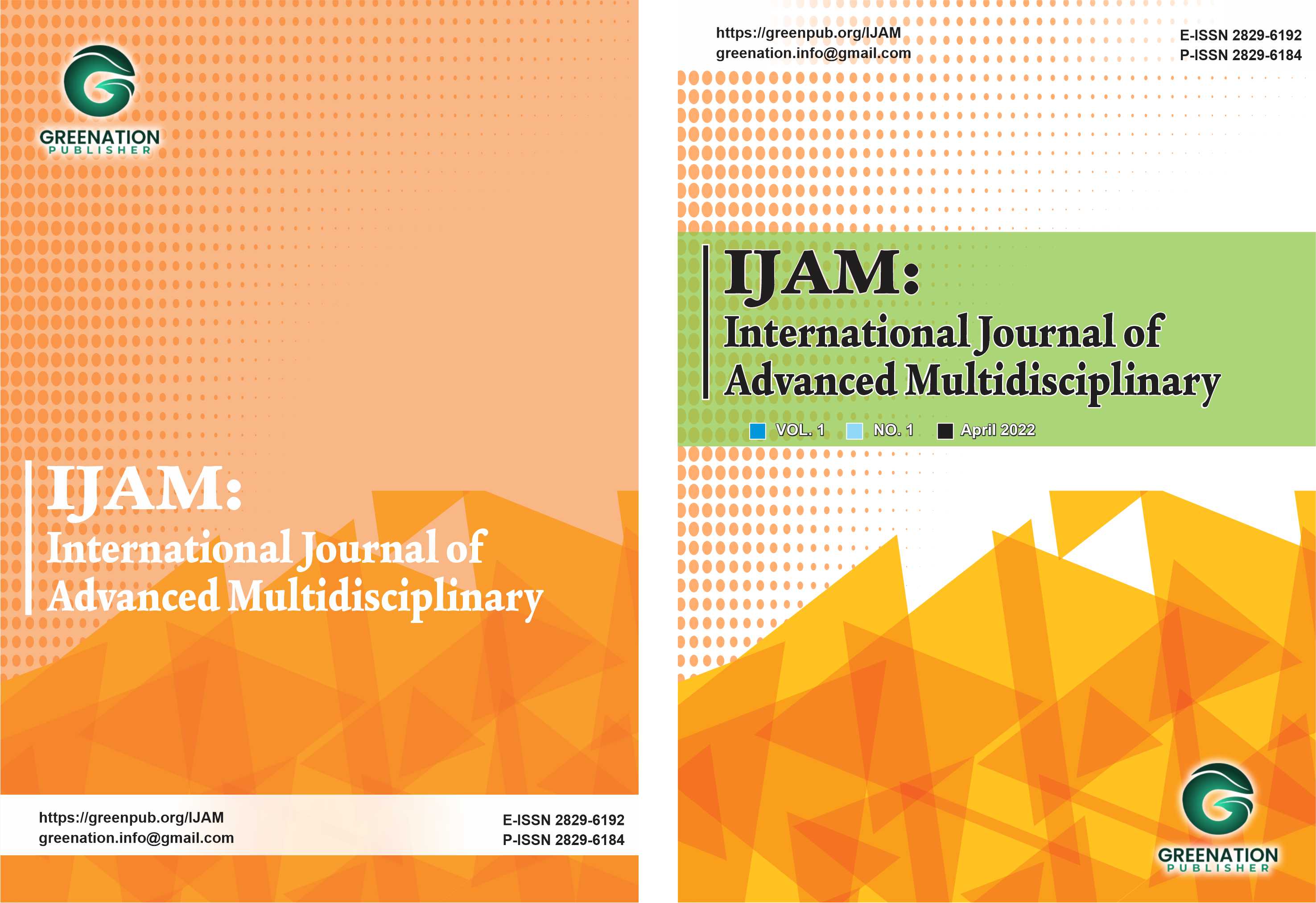Evaluation of Molecular Markers and Morphology In Identification of Local Porang Strain in Karawang District
DOI:
https://doi.org/10.38035/ijam.v2i3.402Keywords:
Identification, Molecular Markers, Morphology, PorangAbstract
Porang plant tubers have the potential to have high economic value, because they contain glucomannan which is good for health and can be processed into a food source to replace carbohydrates. The aim of the study was to identify Karawang Local Porang strains using molecular markers and morphological characters as an effort to conserve and utilize Karawang's local biological resources. Exploration of Local Porang Karawang was carried out at the foot of Mount Sanggabuana which is the habitat of Porang in Karawang district. Molecular identification was carried out at BBPP Biotechnology and Agricultural Genetic Resources with comparisons of Porang Sidrat., Madiun 1 and SS1 Bulukumba varieties. Morphological identification was carried out at the Basic Laboratory of the Faculty of Agriculture, Winaya Mukti University. Based on the results of the DNA amplification of the Porang samples using four RAPD primers, it was found that the three primers showed differences in banding patterns between the Porang Karawang sample and the three Porang varieties for comparison (Porang Madiun 1 Sidrap and SS1 Bulukumba). This shows that there is genetic variation between Porang from Karawang and three other Porang. The results of genetic relationship analysis using four RAPD primers showed that the Porang Karawang sample was different from the Porang samples from the other two areas. The morphological identification results showed differences in characteristics with the comparison. The Karawang Local Porang variety has high quality as indicated by high glucomannan levels of 79.80%.
References
Aeldo Yudifian, Anto Budiharjo, Rejeki Siti Ferniah, and Hermin Pancasakti Kusumaningrum, 2022. Molecular Identification and Morphological Characterization of Patchouli (Pogostemon sp.) From Batang regency, Central Java Indonesian Journal of Biotechnology and Bioscience 9(1). DOI: https://doi.org/10.29122/jbbi.v9i1.4884.
Agus R.N. 2019. Molecular Marker Assisted Selection in Plant Breeding. Plant Breeding, Faculty of Agriculture UGM. https://breeding.faperta.ugm.ac.id/2019/07/23/seleksi-berbantuan-marka-molecule-dalam-pemuliaan-tanaman/
Anary P. M. Egydio Brandão, Lydia F. Yamaguchi, Eric J. Tepe, Antonio Salatino, Massuo J. Kato. 2020. Evaluation of DNA markers for molecular identification of three Piper species from Brazilian Atlantic Rainforest. https://doi.org/10.1371/journal.pone.0239056.
Happyawati, E.M. Septiningsih, M. Yunus, J. Prasetiyono, A. Dadang, and Sutrisno. 2005. Application of Molecular Marker Technology for Verifying Genetic Identity of Commercial Vegetable Varieties. J. Hort. 15(3):153-159. Center for Research and Development of Biotechnology and Agricultural Genetic Resources.
Food Crops Research and Development Center. 2021. Technical Guidelines for Porang Cultivation, Cultivation Technology, Seed Production, Plant Propagation by Tissue Culture and Postharvest. Agency for Agricultural Research and Development. Ministry of Agriculture of the Republic of Indonesia.
Imelda S Marpaung1, Sortha Simatupang and Cucu Somatri. 2021. Exploration of Local Rice Varieties in the North Sumatra Highlands. Proceedings of the 9th National Seminar on Suboptimal Land in 2021, Palembang October 20, 2021 “Sustainable Urban Farming to Improve Community Welfare in the Pandemic Era” Editor: Siti Herlinda et. al. ISBN: 978-623-399-012-7 Publisher: Sriwijaya University Publisher & Printing (UNSRI).
International Plant Names Index. 2000. The Royal Botanic Gardens, Kew, The Harvard University Herbaria, and The Australian National Herbarium. https://www.ipni.org/.
Iwona Jedrzejczyk and Monika Rewers. 2020. Identification and Genetic Diversity Analysis of Edible and Medicinal Malva Species Using Flow Cytometry and ISSR Molecular Markers. Laboratory of Molecular Biology and Cytometry, Department of Agricultural Biotechnology, UTP University of Science and Technology, 85-796 Bydgoszcz, Poland. Agronomy 2020, 10(5), 650. https://doi.org/10.3390/agronomy10050650.
Lukman, d Dinarti, Ulfah Juniarti Siregar, Maman Turjaman, Sudarsono. 2022. Characterization and identification of agarwood-producing plants (Aquilaria spp.) from North Aceh, Indonesia, based on morphological and molecular markers. Biodiversityas Journal of Biological Diversity 23(9). DOI https://doi.org/10.13057/biodiv/d230955.
Sitaresmi T, RH Wening, AT Rakhmi, N Greece, U Susanto. 2013. Local variety of rice in the assembly of superior varieties. Science and Technology of Food Plants. 8(1): 22-30.
Staub, J.E., A. Gaubert, and T.C. Wehner. 1996. Plant variety protection: a consideration of genetic relationships. Hort. sci. 31:1086-1091.Sumarno, N Zuraidah. 2004. Germplasm management is integrated with breeding programs and the seed industry. PERIPI Symposium
Proceedings. Bogor 5-7 August 2004
Van Eeuwijk, F.A. and C. P. Baril. 2001. Conceptual and statistical issues related to the use of molecular markers for disability and essential derivation. Acta Hort. 546:35-53.
Downloads
Published
How to Cite
Issue
Section
License
Authors who publish their manuscripts in this journal agree to the following conditions:
- The copyright on each article belongs to the author(s).
- The author acknowledges that the International Journal of Advanced Multidisciplinary (IJAM) has the right to be the first to publish with a Creative Commons Attribution 4.0 International license (Attribution 4.0 International (CC BY 4.0).
- Authors can submit articles separately, arrange for the non-exclusive distribution of manuscripts that have been published in this journal into other versions (e.g., sent to the author's institutional repository, publication into books, etc.), by acknowledging that the manuscript has been published for the first time in the International Journal of Advanced Multidisciplinary (IJAM).























